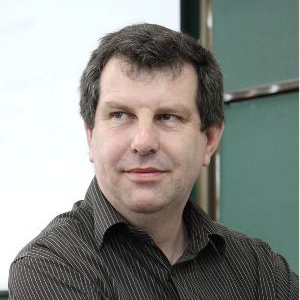Power Transmission Line Simulation
A special issue of Energies (ISSN 1996-1073). This special issue belongs to the section "F: Electrical Engineering".
Deadline for manuscript submissions: closed (31 October 2020) | Viewed by 24572
Special Issue Editors
Interests: electromagnetic compatibility; computational electromagnetics; smart grids
Special Issues, Collections and Topics in MDPI journals
Interests: electromagnetics; electromagnetic compatibility; numerical modelling; measurement techniques; validation
Special Issues, Collections and Topics in MDPI journals
Special Issue Information
Dear Colleagues,
Modern power distribution and transmission networks are undergoing a (r)evolution due to the constant introduction of new technologies, most of them based on the use of “smart” solutions, information communication technology (ICT) systems, new sophisticated control schemes, etc. Moreover, the use of HVDC transmission systems, with more capability to deliver and utility for connecting offshore renewable energy sources to land, are under development. Increasingly, sophisticated protection technologies and online diagnosis techniques are being introduced to detect and to prevent faults on power networks or blackouts in order to avoid the interruption of the power supply and thereby improve the electricity security of the transmission and distribution systems.
Electricity security refers to the power system’s capability to withstand events or incidents producing abnormal system conditions, or provide contingencies, i.e., failures or outages of system components, with minimum acceptable service disruption. Modern networks are subject to a wide range of disturbances, both natural disturbances, such as lightning strikes and faults induced by weather conditions (ice, falling trees, storms), and man-made disturbances, due to switching devices and intentional electromagnetic interference, and IEMI. Furthermore, HVDC lines are often built in parallel with existing HVAC transmission lines, increasing the possibilities of electromagnetic coupling among them.
These disturbances can lead to effects ranging from sensitive load damage and insulation deterioration, even to power supply interruption and blackout.
It is clear that the electromagnetic environment of power networks is becoming increasingly complex, with new challenges that need addressing. This Special Issue is concerned with the development of new models and simulation techniques for power networks together with interfacing techniques of different simulation tools, to cover one or more of the issues before exposed. Papers that address electricity security will be particularly welcomed.
Topics of interest for this Special Issue include but are not limited to:
- Simulation of power transmission line electromagnetic transients;
- Numerical modelling;
- New modelling techniques in frequency and time domain to simulate power networks involving phenomena with a wide range of frequencies;
- Multiphysics simulations;
- Co-simulation of transmission–distribution–communication models;
- Aging of structures due to electrical and mechanical stress;
- Hard and soft fault detection techniques;
- HVDC and HVAC networks;
- Online power network diagnosis techniques;
- EMI and IEMI;
- Lightning strikes.
Dr. Antonella Ragusa
Dr. Alistair Duffy
Guest Editors
Manuscript Submission Information
Manuscripts should be submitted online at www.mdpi.com by registering and logging in to this website. Once you are registered, click here to go to the submission form. Manuscripts can be submitted until the deadline. All submissions that pass pre-check are peer-reviewed. Accepted papers will be published continuously in the journal (as soon as accepted) and will be listed together on the special issue website. Research articles, review articles as well as short communications are invited. For planned papers, a title and short abstract (about 100 words) can be sent to the Editorial Office for announcement on this website.
Submitted manuscripts should not have been published previously, nor be under consideration for publication elsewhere (except conference proceedings papers). All manuscripts are thoroughly refereed through a single-blind peer-review process. A guide for authors and other relevant information for submission of manuscripts is available on the Instructions for Authors page. Energies is an international peer-reviewed open access semimonthly journal published by MDPI.
Please visit the Instructions for Authors page before submitting a manuscript. The Article Processing Charge (APC) for publication in this open access journal is 2600 CHF (Swiss Francs). Submitted papers should be well formatted and use good English. Authors may use MDPI's English editing service prior to publication or during author revisions.
Keywords
- numerical modelling
- computational Electromagnetics
- EMC
- EMI
- IEMI
- reliability
- electricity security
- faults detection
- HVDC
- HVAC
- power transmission line
- multi-physics simulations






